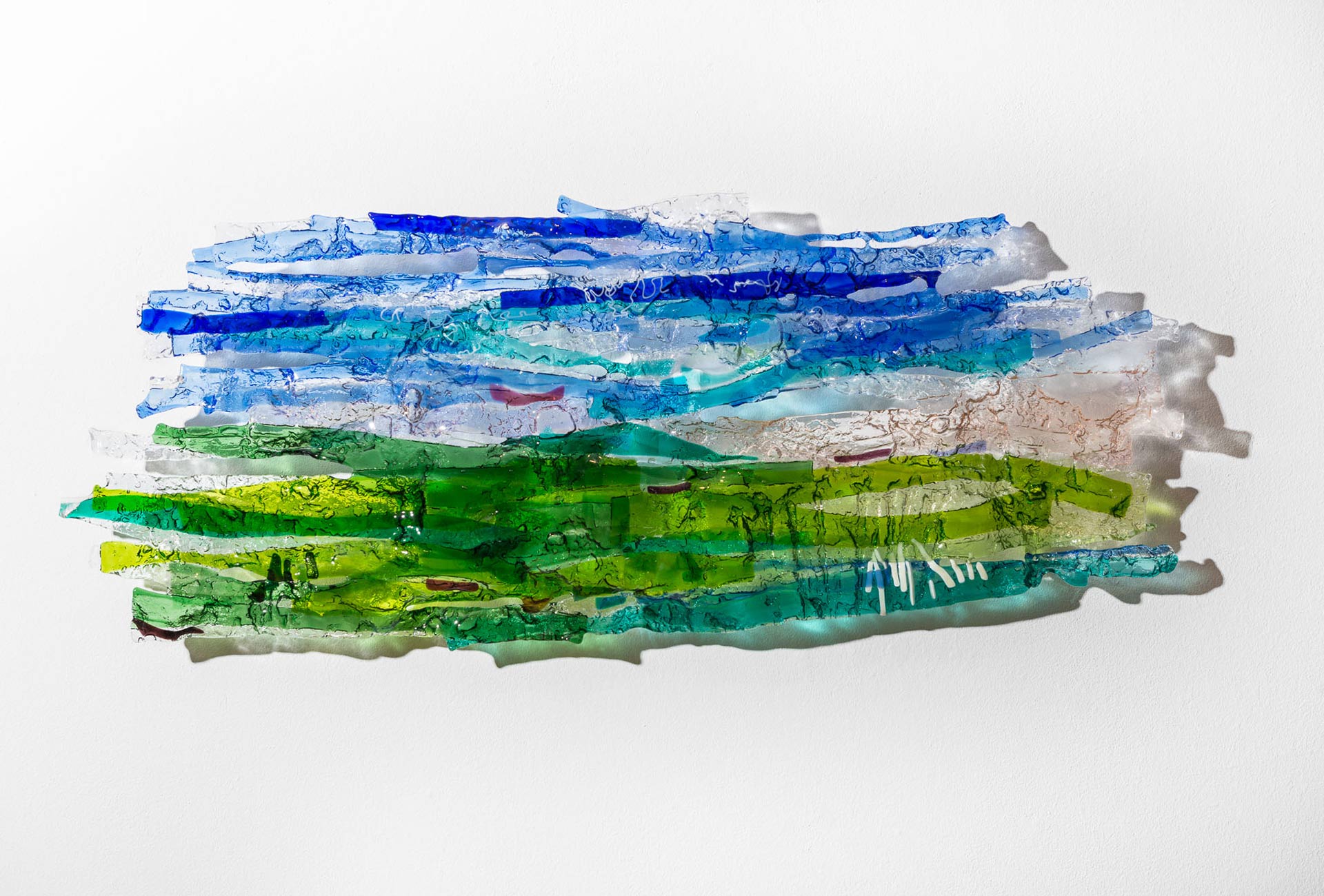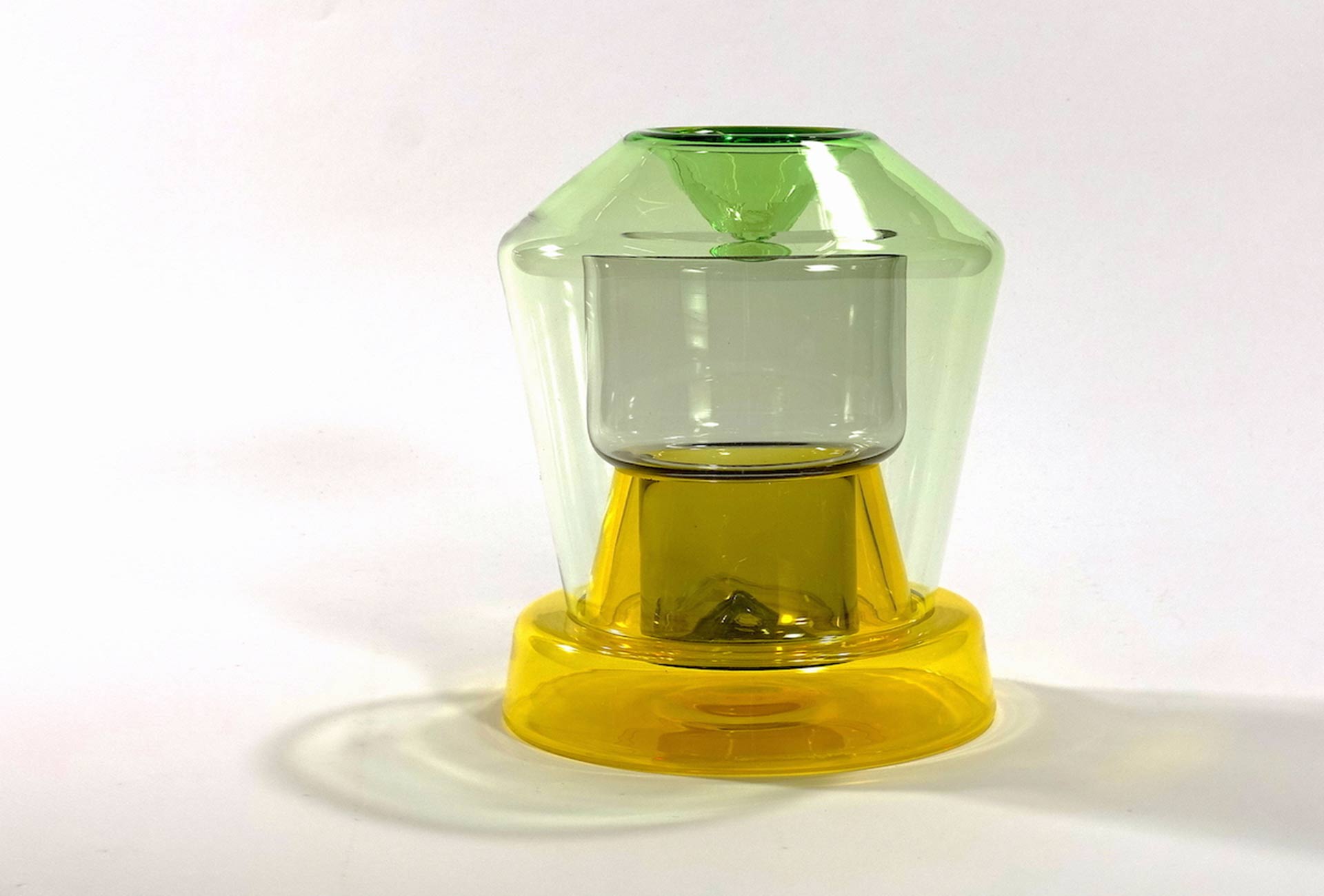The United Nations has declared 2022 the “International Year of Glass.” This declaration pays tribute to a material that has exerted a lasting influence on people’s lives for many millennia. Numerous activities this year will highlight the importance of glass for all of us. The focus will be on the history of its manufacture and the many different ways in which it can be used. Glass is irreplaceable for countless applications in everyday life and is also expected to play an important role in numerous future issues such as climate protection and CO2 reduction.
To continue appropriately honoring glass as a material, the Immenhausen Glass Museum presents “Lichtes” (“Light”). The museum’s first special exhibition in 2022 features works by Alkie Osterland from Schwäbisch Gmünd and Cornelius Réer from Nuremberg. The latter glassmaker refrains from artisanal artistry, but his works are nevertheless full of refinement. Alkie Osterland forms the glass by melting it in a compact negative mold. We questioned both artists about their sources of inspiration.

Alkie Osterland, wall object Syrinx, on display at the Glasmuseum Immenhausen.
Despite all the differences in approach, self-image and technical-artisanal working methods, what do you both have in common?
Alkie Osterland We each have an unmistakable preference for transparent glass, whether colored or clear. Translucency, reflections and the effects of shadows are our shared tools for achieving a lively way of dealing with the material.
Cornelius Réer Our common ground is also the mutual desire to develop new things. The more experience we have, the easier and more promptly that development can occur.

Glass object by Cornelius Réer.
What is the significance for you of transparency and light, which is also referenced in the exhibition’s title?
C.R. Vessels are by definition containers into which one puts something, whether it be a material substance or, in this case, immaterial light. Whether the things are intended for use or to be like art objects leads to different results. But every piece has color, light and volume. Working with them is a pleasure, both emotionally and during the planning. The mixing of light creates additional colors and colored shadows. The light spaces within a volume are always exciting. And the effect doesn’t only remain in the vessel: it also radiates and reflects beyond the object.

Alkie Osterland, wall object Daphne.
A.O. The wall objects show light-flooded landscapes with appealing colors. They are structured in relief, but also openwork, mostly in green and blue, and they’re made exclusively of transparent glass. Some of the titles refer to the horrors of a specific place. However, I like to work with clear glass alone, as in the cloud pictures, which can only be genuinely comprehended at second glance and must assert themselves in space solely through their mass and reflection.
In addition to the light effect, is there also the question of form?
C.R. Form leads to function, and vice versa. What makes an object pleasant to use and to handle? What can be done to enliven the boring feel of a smooth material? My drinking vessels are not designed to impress, but are free to become cherished daily companions because one recognizes that the rim, the feel and the color are simply right. In my object-like works, I aim to achieve exciting light effects through wideness and narrowing. But all individual parts retain the possibility of autonomous function. They are ambivalent – object-like, yet also functional.

Cornelius Réer, carafe with cup Dropp: the unity of function and aesthetics is typical for this glass artist from Nuremberg.
A.O. Due to the color scheme and the horizon, my wall objects initially seem like landscape paintings, but actually they are structured in relief. The resulting densification of the color and the moving, curved surface combine to greatly vary the pictorial effect depending on the viewing angle. The distance between the object and the wall behind it creates a colored shadow, an image in the background, which is visible in the openings. I find lightness, fleetingness and ambiguity extremely appealing. Interview: Wolfgang Schmölders
Immenhäuser Glass Award 2022
The exhibition for the Immenhäuser Glass Prize (May 21 to September 17, 2022) follows after the special exhibit “Lichtes.” The prize is awarded every three years. The title of the eighth edition is “GLASS 2022.” Participation is limited solely to glass artists who live and work in Germany and who submit works from the genres of studio glass, flat glass and innovative hollow glass.
glasmuseum@immenhausen.de
- —
-
Glasmuseum Immenhausen
Am Bahnhof 3
34376 Immenhausen
Germany - Link